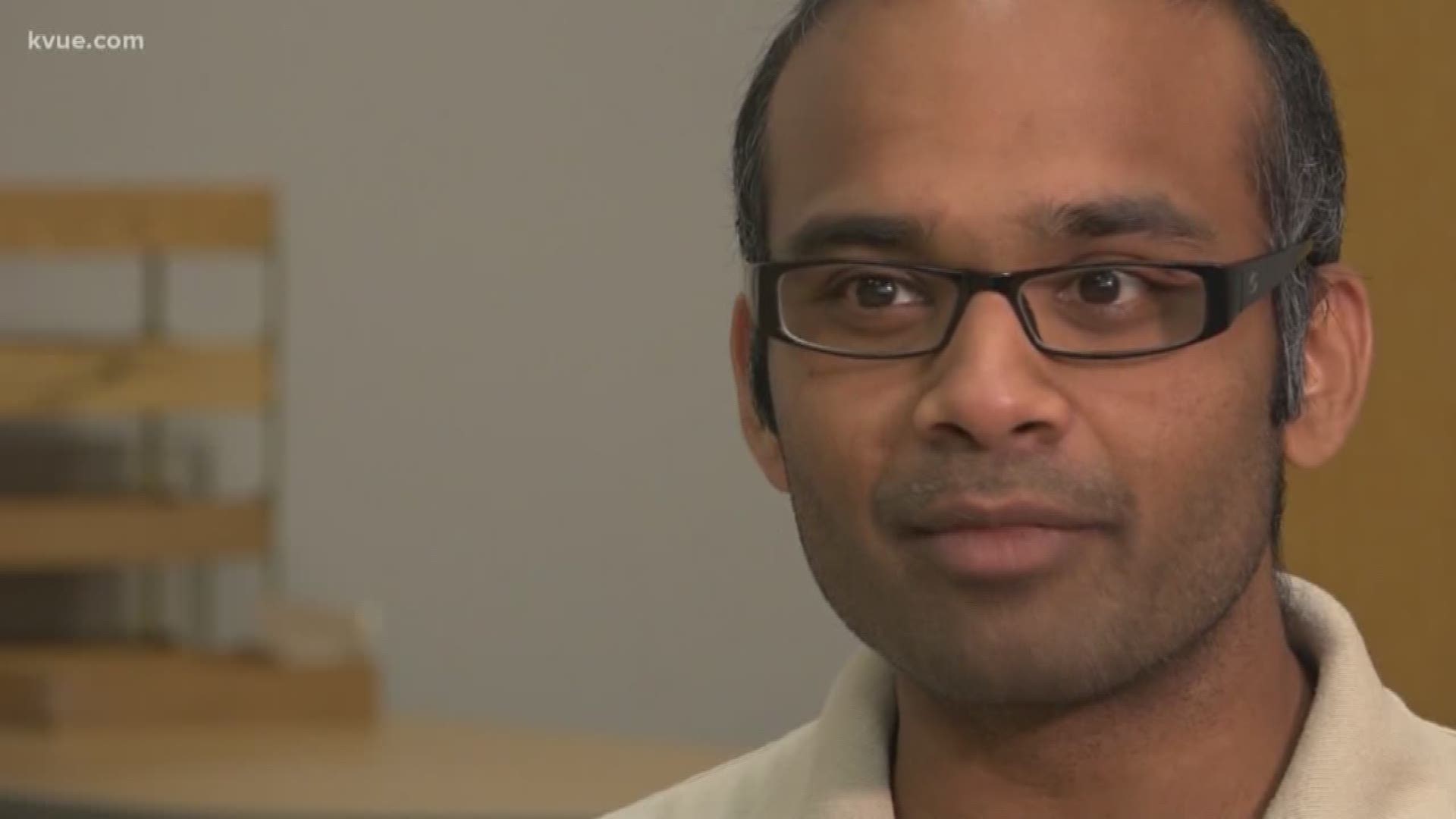AUSTIN — With the start of the school year on Wednesday, many students will be headed to the University of Texas to figure out exactly what they want to study or where they want to invest their time. However, there are a set of UT students working to change the batteries we use every day.
The J.J. Pickle Research Campus in northwest Austin is a research facility filled with professional programs and a lot of Ph.D. students as well. Hema Movva is one of these people getting his undergraduate in India and moving to Austin for UT specifically.
"It was an easy choice to make," Movva said. "Very few schools have these kinds of capabilities."
Movva is in the Solid-State Electronics branch in the Electrical and Computer Engineering Department. He is focused on making semiconductors and researching nanotechnologies.
"I want to make more energy-efficient computing systems and more powerful systems," Movva said.
One of Movva's peers is Jessica Depoi, who is working to get her Master's after coming to Texas from New Mexico. While she isn't as far along as Movva, she is getting to take a semester to train and get a better understanding of everything at her disposal.
"It's not only getting trained on it, but it's watching someone who's been working on it for three, four, five, six, seven years or more," Depoi said.
Movva, Depoi and their team are working on creating transistors -- which power batteries -- in clean rooms. Before anyone is able to go inside, they have to take off all their makeup, put on covers for their shoes and wear a full-body white lab coat to keep any particles from getting on the transistors as they are made.
While there is always value in finding ways to improve batteries, we are in a time when it is really important. Dr. Sanjay Banerjee is the Director of Microelectronics Research Center for UT and works with all these students at J.J. Pickle.
"We work on computer chip technology," Banerjee said. "The main goal, of course, is to come up with new research ideas that can be published."
For more than 50 years, engineers have been using a method called "Moore's Law," which involves cramming silicon transistors onto chips. The problem today is how quickly our actual technology and the devices these chips are inside have developed.
"If you keep doing things the same old way -- the temperature of the chips might exceed the temperatures of nuclear reactors of the sun," Banerjee said. "If you feel the backside of your laptop, it's pretty darn hot. In fact, you could cook eggs on your computer chips if you wanted to."
This is why there is a need for new, more efficient transistors to make the chips we put in our batteries. Banerjee's team is working on new kinds of semiconducting materials based on two-dimensional systems called "graphene," which could lead to a brand new type of transistor that could be faster at much lower energies. Movva said there is potential to change devices we use every day.
"Batteries inside phones last only a day," Banerjee said. "Why not a week? You have these loading icons going on in your computers. Why not get rid of them?"
J.J. Pickle has about 150 UT students using it, with 200 people from outside the university doing work there as well. Even the other company researchers who are using the clean rooms at J.J. Pickle are also looking for the same type of solutions as Banerjee's students.
"Looking at what these people are trying to solve -- what I've realized is that they're not a whole lot different from the problems that we are trying to solve," Movva said.
Movva and his team have already started to make some breakthroughs, even to the point where they have started working with UT's Technology Licensing Department in hopes of their work getting patented. Technology Licensing Specialist for UT Eileen Dawson said this type of technology has the chance to be picked up by outside companies.
"To be able to have a technology that can impact just your everyday life is really exciting," Dawson said.
No matter whether or not it does, Banerjee said he wants his students to continue exploring no matter how many times they have to adjust their approach or figure out another method.
"Doing the experiments yourself and have the experiment fail 90 percent of the time is a huge learning experience," Banerjee said. "But the 10 percent of the cases where it works? it's a tremendous rush."
To learn more about the Microelectronics Research Center, you can visit mrc.utexas.edu.
Inventions and Innovation at UT Part 2 will air Thursday on KVUE Daybreak.

